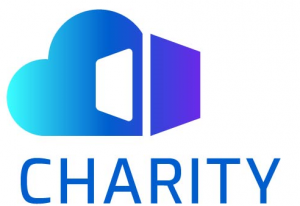Collaboration activities aim at exploring synergies between a Project partner and external projects or research groups. ACCORDION splits collaboration activities into two main categories. These categories refer to the efforts which include contributions by “sibling” projects, and activities that are jointly performed with research groups not associated with ACCORDION.
In total, participation in a joint event and two research collaborations have been established so far. In the Technical Community Event held by “H-Cloud” the perspective of ACCORDION on the topic of “Bringing Intelligence at the Edge” was presented by Project Coordinator P. Dazzi (CNR) and K. Tserpes (HUA). The topics of “load prediction at the edge” and “mobility prediction” were the directions that were investigated during the research collaborations, with ACCORDION joining forces with partners from the project “CHARITY” and the LASI research laboratory respectively.
 The collaboration activity with the “CHARITY” project resulted in a Service Traffic Prediction for Elastic Service Function. The approach used, refers to leveraging network features, in order to predict future traffic with regard to data services. As a result of this collaboration, a paper has been presented at the 7th IEEE International Conference on Big Data Computing Service and Machine Learning Applications. The goal of this research work is to achieve dynamical resource management and be able to proactively scale up or down, by timely replicating virtual machines and network functions of the data services. The proposed model was based on an innovative hybrid Encoder-decoder DL architecture that utilizes bidirectional and unidirectional LSTM layers. This model served as a predictive mechanism that helped infer the need for scaling the infrastructure based on network feature data.
The collaboration activity with the “CHARITY” project resulted in a Service Traffic Prediction for Elastic Service Function. The approach used, refers to leveraging network features, in order to predict future traffic with regard to data services. As a result of this collaboration, a paper has been presented at the 7th IEEE International Conference on Big Data Computing Service and Machine Learning Applications. The goal of this research work is to achieve dynamical resource management and be able to proactively scale up or down, by timely replicating virtual machines and network functions of the data services. The proposed model was based on an innovative hybrid Encoder-decoder DL architecture that utilizes bidirectional and unidirectional LSTM layers. This model served as a predictive mechanism that helped infer the need for scaling the infrastructure based on network feature data.
Another research collaboration was established with the joint effort of ICCS and the LASI research laboratory, which is attached to the Software Information Technology Engineering department at Ecole de Technologie Superieure (ETS) in Canada. This action was focused on Mobility Modelling and Prediction for Edge Resource Management and published a paper in the 19th ACM International Symposium on Mobility Management and Wireless Access. The main reason for this research was to identify how mobility data of IoT and edge devices can be leveraged by intelligent decision-making mechanisms on Edge infrastructures. A user may require the offloading of their tasks to be handled by different devices in the vicinity whilst moving. For that reason, a predictive mechanism that can timely infer the future position of the user based on its past movements was researched. A customized Neuro-Genetic Algorithm that included a mobility-oriented loss function, an early stopping criterion, and a similarity function to establish better crossover between candidate models was implemented to that end.
